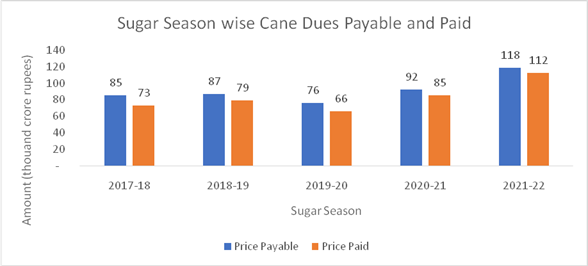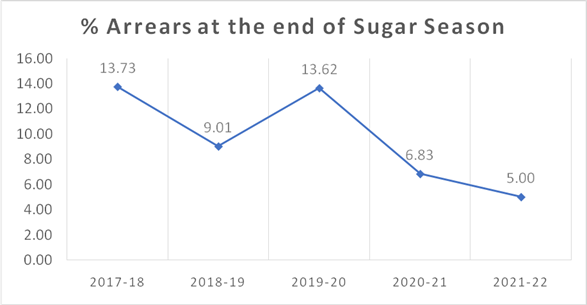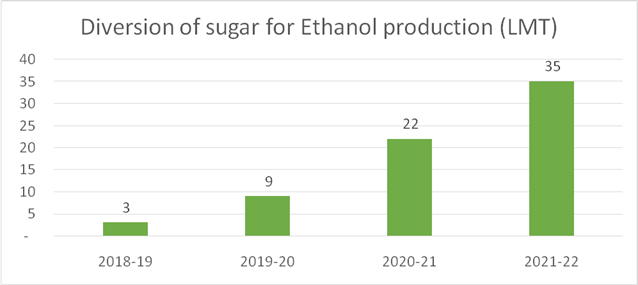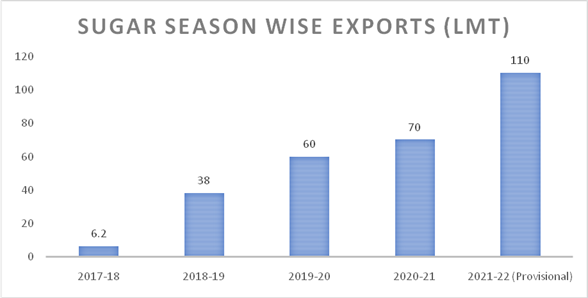India emerged as the world’s largest producer and consumer of sugar and world’s 2nd largest exporter of sugar.
In Sugar Season (Oct-Sep) 2021-22, a record of more than 5000 Lakh Metric Tons (LMT) sugarcane was produced in the country out of which about 3574 LMT of sugarcane was crushed by sugar mills to produce about 394 LMT of sugar (Sucrose). Out of this, 35 LMT sugar was diverted to ethanol production and 359 LMT sugar was produced by sugar mills. With this, India has emerged as the world’s largest producer and consumer of sugar as well as the world’s 2nd largest exporter of sugar.
Another highlight of the season is the highest exports of about 109.8 LMT that too with no financial assistance which was being extended upto 2020-21. Supportive international prices and Indian Government Policy led to this feat of Indian Sugar Industry. These exports earned foreign currency of about Rs. 40,000 crores for the country.



Growth of ethanol as biofuel sector in last 5 years has amply supported the sugar sector as use of sugar to ethanol has led to better financial positions of sugar mills due to faster payments, reduced working capital requirements and less blockage of funds due to less surplus sugar with mills.
During 2021-22, revenue of about ₹ 18,000 crore has been made by sugar mills/distilleries from sale of ethanol which has also played its role in early clearance of cane dues of farmers. Ethanol production capacity of molasses/sugar-based distilleries has increased to 605 crore litres per annum and the progress is still continuing to meet targets of 20% blending by 2025 under Ethanol Blending with Petrol (EBP) Programme. In new season, the diversion of sugar to ethanol is expected to increase from 35 LMT to 50 LMT which would generate revenue for sugar mills amounting to about ₹ 25,000 crores.

There is an optimum closing balance of 60 LMT of sugar which is essential to meet domestic requirements for 2.5 months. The diversion of sugar to ethanol and exports led to unlocking of value chain of the whole industry as well as improved financial conditions of sugar mills leading to more optional mills in ensuing season.